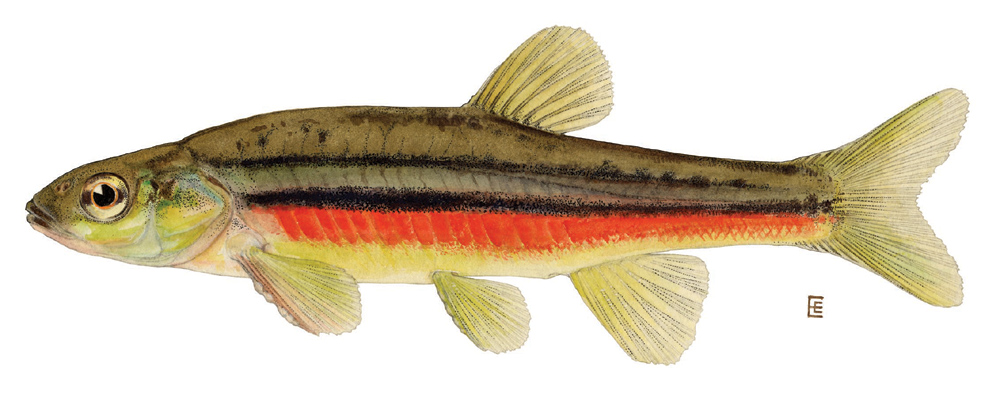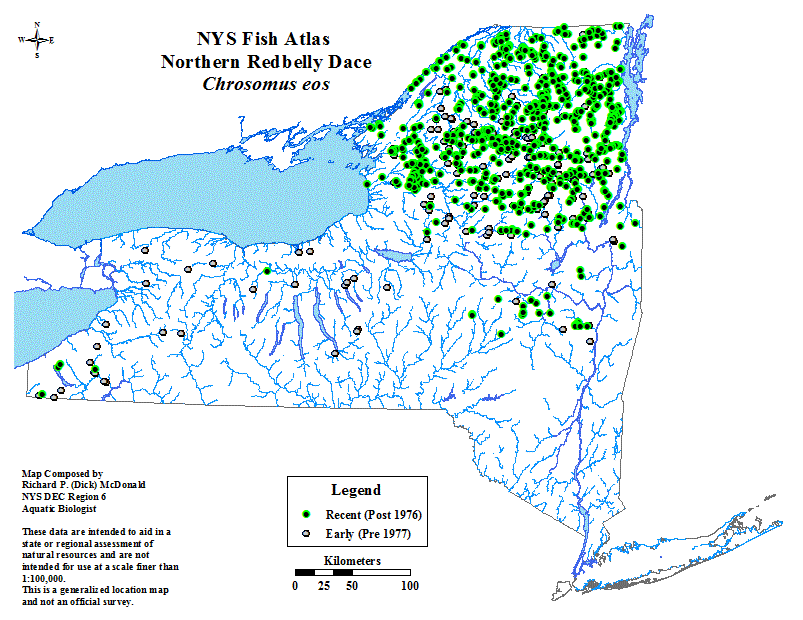
Northern Redbelly Dace (Phoxinus eos)
The overall range of the redbelly dace is from Nova Scotia and Prince Edward Island west in a rather narrow curving band through southern Canada and the northern and north-central United States from New York and Pennsylvania to Michigan, Wisconsin, and north to the Peace-Mackenzie drainage of British Columbia and the Northwest Territories. In New York, it occurs throughout the central and northern Adirondacks, with isolated populations in Vly Creek in the Hudson drainage, the Finger Lakes area, and western part of the state where we have recent records from Conewango and Brokenstraw Creeks.
The redbelly dace occurs in ponds and in the slow parts of streams, often in cool, darkly stained waters of swampy northern creeks. It is occasionally taken in moderate current.
The redbelly dace spawns in the spring and early summer, May to early August. It has been observed that at least some females spawned twice a year because two size classes of maturing eggs were found. Spawning takes place on clumps of filamentous al- gae. A female accompanied by one or more males darts from one algal mass to another with a spawning embrace of 2 to 4 seconds at each one. During each spawning episode, 5 to 30 non-adhesive eggs are released and become entangled in the algal filaments. The eggs hatch in 8 to 10 days at 70 to 80 F. Maturity is reached in the second or third summer, and the fish live at least 3 years.
The diet of the redbelly dace includes much plant material, including diatoms and filamentous algae, as well as zooplankton, insects, and occasionally fish.
Distribution of northern redbelly dace in NY state.
A137 KB image of the redbelly dace is also available for download.
The above species description was taken out of "The Inland Fishes of New York State" by C. Lavett Smith, published by the New York State Department of Environmental Conservation, 1985.
